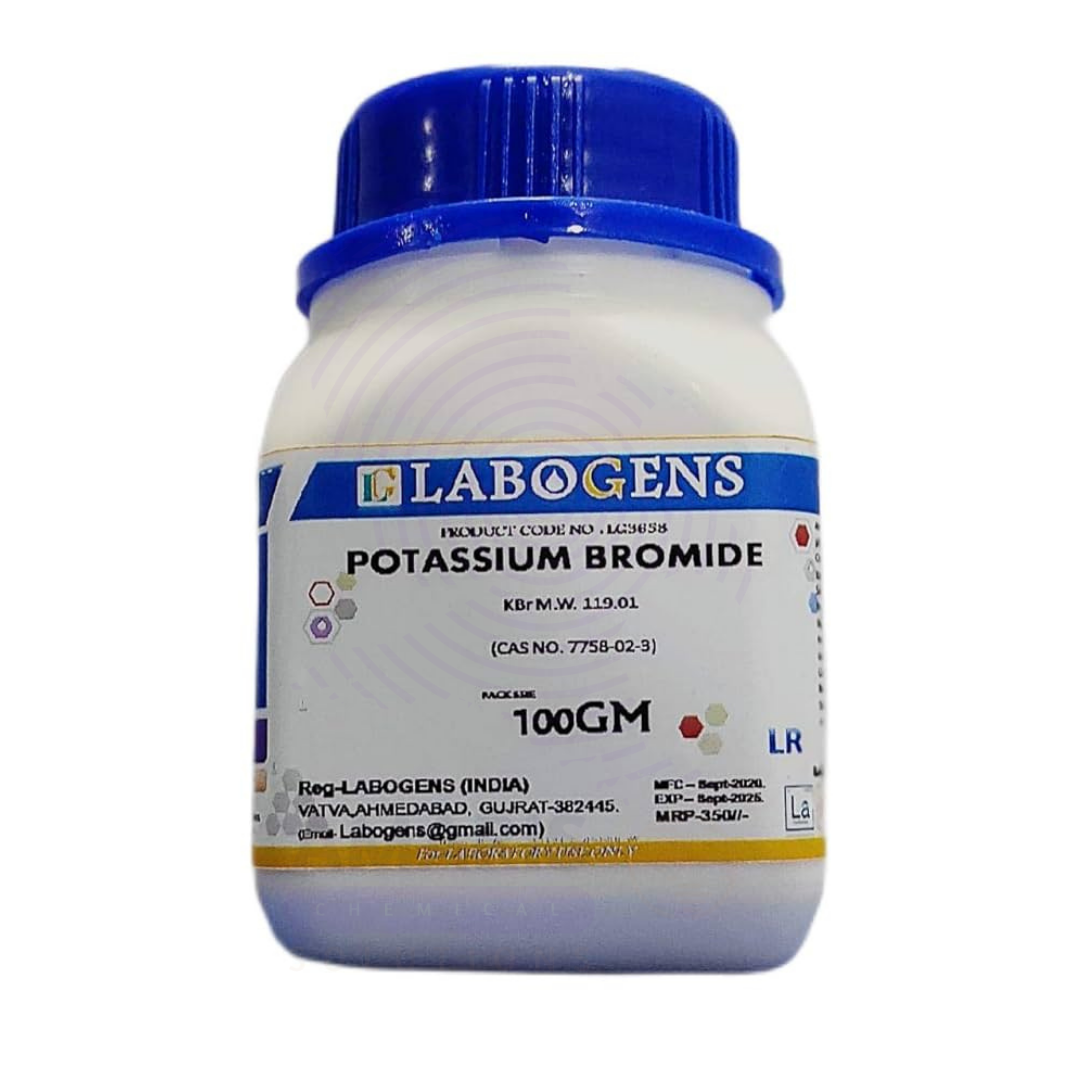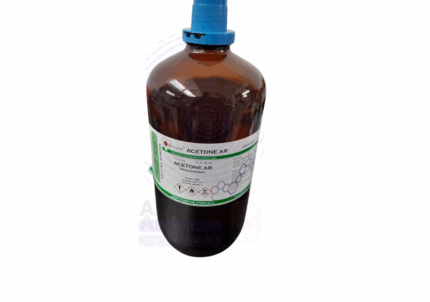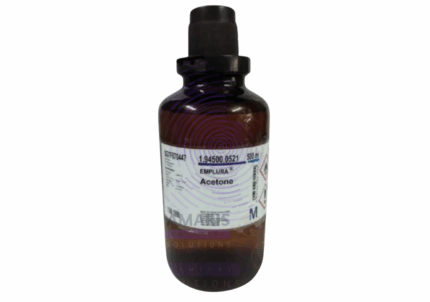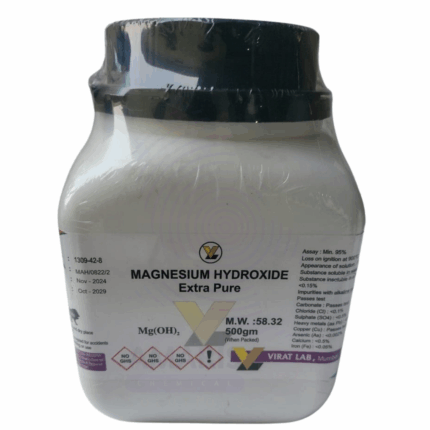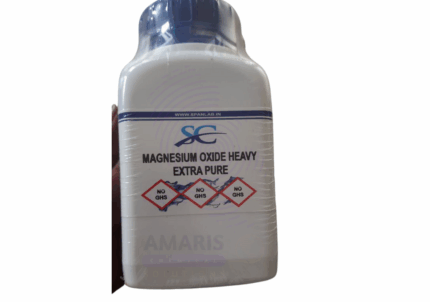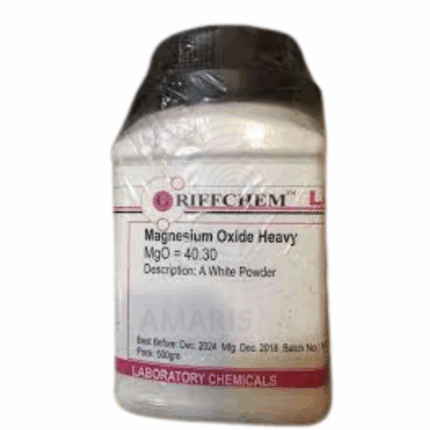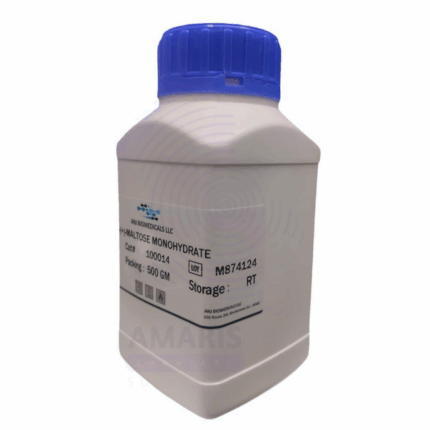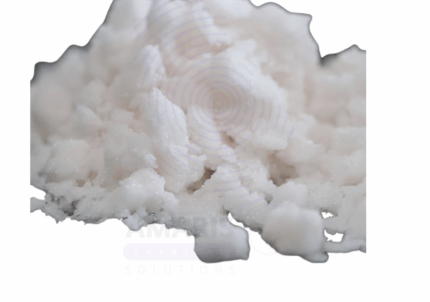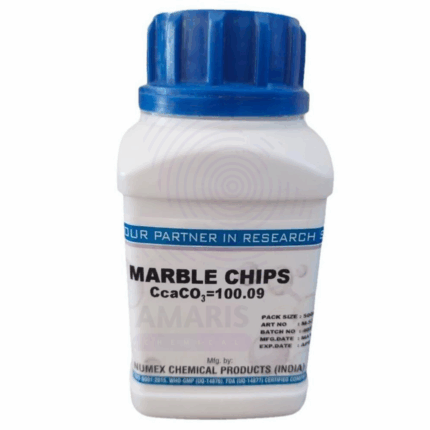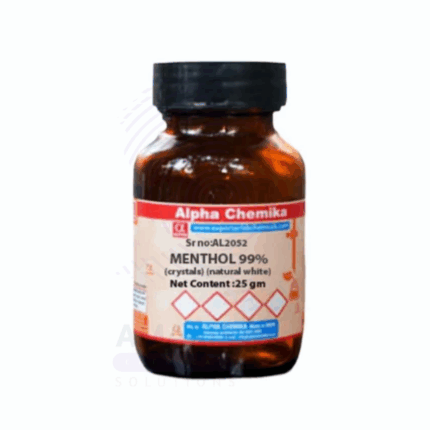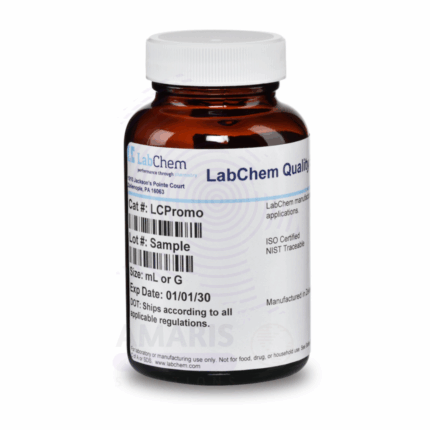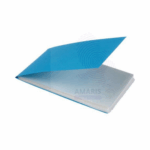

Potassium Bromide Extra Pure
$ 17.20
Potassium Bromide Extra Pure is a highly refined, white crystalline compound with the chemical formula KBr, renowned for its exceptional purity and broad utility in scientific, medical, and industrial contexts. Its stable, non-hygroscopic nature and excellent solubility in water make it a reliable reagent in laboratory settings where consistency and accuracy are crucial.
This compound plays a central role in infrared (IR) spectroscopy, particularly for preparing transparent pellets that allow for the clear transmission of IR radiation, enabling the analysis of organic compounds. In the pharmaceutical sector, Potassium Bromide has a legacy use as an anticonvulsant and sedative, especially in veterinary practices for managing seizures. It’s also employed in photographic processing in the formulation of light-sensitive silver bromide emulsions and in some chemical synthesis pathways requiring bromide ions.
Potassium Bromide Extra Pure
PRIMARY USES
- Pharmaceutical Applications:
- Historically used as a sedative and anticonvulsant.
- Still utilized in veterinary medicine to manage epilepsy in animals.
- Acts as a source of bromide ion in medicinal preparations.
- Analytical Chemistry & Laboratory Reagent:
- Commonly used in infrared (IR) spectroscopy as a matrix material for pellet formation.
- Offers excellent transparency in the infrared range (4000–400 cm⁻¹), ideal for FTIR sample prep.
- Employed as a reagent in analytical chemistry and titrations.
SECONDARY USES
- Photographic Industry:
- Used in the production of photographic emulsions as a halide component.
- A key ingredient in silver bromide film processing.
- Optical Applications:
- Applied in optical windows and components due to its broad transmission range.
- Chemical Synthesis:
- Serves as a precursor in the synthesis of other bromine-containing compounds.
1. Basic Identification Attributes
- Chemical Name: Potassium Bromide
- CAS Number: 7758-02-3
- HS Code: 2827.51.00
- Molecular Formula: KBr
- Synonyms:
- Bromide of Potash
- Kalii Bromidum
- Kaliumbromid
- KBr
2. Physical & Chemical Properties
- Physical State: Solid (crystalline powder or granules)
- Color & Odor: White, odorless
- Boiling Point & Melting Point:
- Melting Point: ~734 °C
- Boiling Point: ~1435 °C
- Density/Specific Gravity: ~2.75 g/cm³
- Solubility:
- Soluble in water (~65 g/100 mL at 100 °C)
- Slightly soluble in alcohol
- pH Level: ~6–8 (5% solution in water)
- Vapor Pressure & Volatility: Negligible
- Flash Point: Not applicable
- Autoignition Temperature: Not flammable
- Viscosity: Not applicable
3. Safety & Hazard Attributes
- Hazard Class (GHS Classification):
- Not classified as hazardous under normal use
- NFPA Ratings:
- Health: 1
- Flammability: 0
- Reactivity: 0
- Exposure Limits:
- No established OSHA PEL or ACGIH TLV
- Reactivity:
- Stable under normal conditions
- Incompatible with strong acids (may release HBr gas)
4. Storage & Handling Attributes
- Storage Conditions:
- Store in a tightly sealed container
- Keep in cool, dry, well-ventilated area
- Incompatible Materials:
- Strong oxidizing agents
- Strong acids
- Container Type:
- Glass or HDPE containers
- Shelf Life & Expiration Date:
- Stable for several years when properly stored
- Special Handling Requirements:
- Use gloves and eye protection
- Avoid ingestion and inhalation
5. Regulatory & Compliance Attributes
- Regulatory Status:
- Listed under FDA and EU pharmacopeias for medical use
- Not restricted under major chemical regulations
- Hazard Symbols (GHS Pictograms):
- None required for most uses
- Transportation Restrictions:
- Not classified as hazardous for transport
- Waste Disposal Method:
- Dispose according to local regulations
- Non-hazardous waste classification
6. Environmental & Health Impact
- Ecotoxicity:
- Low toxicity to aquatic life
- Persistence in Environment:
- Dissolves and disperses readily in water
- Carcinogenicity/Mutagenicity:
- Not classified as carcinogenic or mutagenic
- Biodegradability:
- Inorganic compound; not biodegradable, but not persistent in harmful form
SAFETY PRECAUTIONS
Personal Protective Equipment (PPE):
- Wear chemical-resistant gloves (e.g., nitrile or neoprene).
- Use safety goggles or face protection to avoid eye exposure.
- Wear a lab coat or apron to protect skin and clothing.
- Use a dust mask if handling powdered form in poorly ventilated areas.
Handling:
- Handle with care to avoid dust generation and dispersion.
- Avoid contact with skin, eyes, and clothing.
- Do not inhale dust.
- Wash hands thoroughly after handling.
Storage:
- Store in a tightly closed container.
- Keep in a cool, dry, and well-ventilated place.
- Protect from moisture and incompatible substances such as strong acids and oxidizers.
FIRST AID MEASURES
Inhalation:
- Move people to fresh air.
- Seek medical attention if symptoms like coughing or difficulty breathing occur.
Skin Contact:
- Wash with plenty of soap and water.
- Remove contaminated clothing.
- Seek medical advice if irritation develops.
Eye Contact:
- Rinse thoroughly with water for at least 15 minutes.
- Lift eyelids occasionally.
- Seek medical help if irritation persists.
Ingestion:
- Rinse mouth with water.
- Do not induce vomiting unless directed by medical personnel.
- Seek immediate medical attention.
FIRE FIGHTING MEASURES
Flammability:
- Not flammable under normal conditions.
Extinguishing Media:
- Use dry chemicals, water spray, foam, or carbon dioxide.
Hazardous Combustion Products:
- May emit toxic fumes of potassium oxides and hydrogen bromide when heated to decomposition.
Firefighter Protection:
- Firefighters should wear self-contained breathing apparatus (SCBA) and full protective gear.
- Avoid inhalation of combustion fumes.


 Preservatives(food)
Preservatives(food) Flavor Enhancers
Flavor Enhancers Acidulants
Acidulants Sweeteners
Sweeteners Antioxidants
Antioxidants Colorants(food)
Colorants(food) Nutraceutical Ingredients (food)
Nutraceutical Ingredients (food) Nutrient Supplements
Nutrient Supplements Emulsifiers
Emulsifiers
 Collectors
Collectors Dust Suppressants
Dust Suppressants Explosives and Blasting Agents
Explosives and Blasting Agents Flocculants and Coagulants
Flocculants and Coagulants Frothers
Frothers Leaching Agents
Leaching Agents pH Modifiers
pH Modifiers Precious Metal Extraction Agents
Precious Metal Extraction Agents
 Antioxidants(plastic)
Antioxidants(plastic) Colorants (Pigments, Dyes)
Colorants (Pigments, Dyes) Fillers and Reinforcements
Fillers and Reinforcements Flame Retardants
Flame Retardants Monomers
Monomers Plasticizers
Plasticizers Polymerization Initiators
Polymerization Initiators Stabilizers (UV, Heat)
Stabilizers (UV, Heat)
 Antifoaming Agents
Antifoaming Agents Chelating Agents
Chelating Agents Coagulants and Flocculants
Coagulants and Flocculants Corrosion Inhibitors
Corrosion Inhibitors Disinfectants and Biocides
Disinfectants and Biocides Oxidizing Agents
Oxidizing Agents pH Adjusters
pH Adjusters Scale Inhibitors( water)
Scale Inhibitors( water)
 Antioxidants(cosmetic)
Antioxidants(cosmetic) Emollients
Emollients Fragrances and Essential Oils
Fragrances and Essential Oils Humectants
Humectants Preservatives
Preservatives Surfactants(cosmetic)
Surfactants(cosmetic) Thickeners
Thickeners UV Filters
UV Filters
 Fertilizers
Fertilizers Soil Conditioners
Soil Conditioners Plant Growth Regulators
Plant Growth Regulators Animal Feed Additives
Animal Feed Additives Biostimulants
Biostimulants Pesticides (Herbicides, Insecticides, Fungicides)
Pesticides (Herbicides, Insecticides, Fungicides)
 Active Pharmaceutical Ingredients (APIs)
Active Pharmaceutical Ingredients (APIs) Excipients
Excipients Solvents(pharmaceutical)
Solvents(pharmaceutical) Antibiotics
Antibiotics Antiseptics and Disinfectants
Antiseptics and Disinfectants Vaccine Adjuvants
Vaccine Adjuvants Nutraceutical Ingredients (pharmaceutical)
Nutraceutical Ingredients (pharmaceutical) Analgesics & Antipyretics
Analgesics & Antipyretics
 Analytical Reagents
Analytical Reagents Solvents(lab)
Solvents(lab) Chromatography Chemicals
Chromatography Chemicals Spectroscopy Reagents
Spectroscopy Reagents microbiology-and-cell-culture-reagents
microbiology-and-cell-culture-reagents Molecular Biology Reagents
Molecular Biology Reagents Biochemical Reagents
Biochemical Reagents Inorganic and Organic Standards
Inorganic and Organic Standards Laboratory Safety Chemicals
Laboratory Safety Chemicals Specialty Laboratory Chemicals(Special Laboratory Equipment)
Specialty Laboratory Chemicals(Special Laboratory Equipment)
 Demulsifiers
Demulsifiers Hydraulic Fracturing Fluids
Hydraulic Fracturing Fluids Scale Inhibitors(oil)
Scale Inhibitors(oil) Surfactants(oil)
Surfactants(oil) Drilling Fluids
Drilling Fluids
 Dyes and Pigments
Dyes and Pigments Bleaching Agents
Bleaching Agents Softening Agents
Softening Agents Finishing Agents
Finishing Agents Antistatic Agents
Antistatic Agents
 Admixtures
Admixtures Waterproofing Agents
Waterproofing Agents Sealants and Adhesives
Sealants and Adhesives Curing Compounds
Curing Compounds Concrete Repair Chemicals
Concrete Repair Chemicals Anti-Corrosion Coatings
Anti-Corrosion Coatings
 Surfactants(cleaning)
Surfactants(cleaning) Builders
Builders Enzymes
Enzymes Solvents (Cleaning)
Solvents (Cleaning) Fragrances
Fragrances
 Electronic Chemicals
Electronic Chemicals Catalysts
Catalysts Lubricants
Lubricants Photographic Chemicals
Photographic Chemicals Refrigerants
Refrigerants Automotive chemicals
Automotive chemicals Pyrotechnic Chemicals
Pyrotechnic Chemicals
 Biodegradable Surfactants
Biodegradable Surfactants Bio-based Solvents
Bio-based Solvents Renewable Polymers
Renewable Polymers Carbon Capture Chemicals
Carbon Capture Chemicals Wastewater Treatment Chemicals
Wastewater Treatment Chemicals
 Pigments
Pigments Solvents(paint)
Solvents(paint) Specialty Coatings
Specialty Coatings Binders/Resins
Binders/Resins Additives
Additives Driers
Driers Anti-Corrosion Agents
Anti-Corrosion Agents Functional Coatings
Functional Coatings Application-Specific Coatings
Application-Specific Coatings
 Fresh Herbs
Fresh Herbs Ground Spices
Ground Spices Whole Spices
Whole Spices Spice Blends
Spice Blends Dried Herbs
Dried Herbs
 Leavening Agents
Leavening Agents Dough Conditioners
Dough Conditioners Flour Treatments
Flour Treatments Fat Replacers
Fat Replacers Decoratives
Decoratives Preservatives(baking)
Preservatives(baking)
 Plasticizers & Softeners
Plasticizers & Softeners Reinforcing Agents
Reinforcing Agents Adhesion Promoters
Adhesion Promoters Vulcanizing Agents
Vulcanizing Agents Antidegradants
Antidegradants Blowing Agents
Blowing Agents Fillers & Extenders
Fillers & Extenders Accelerators & Retarders
Accelerators & Retarders